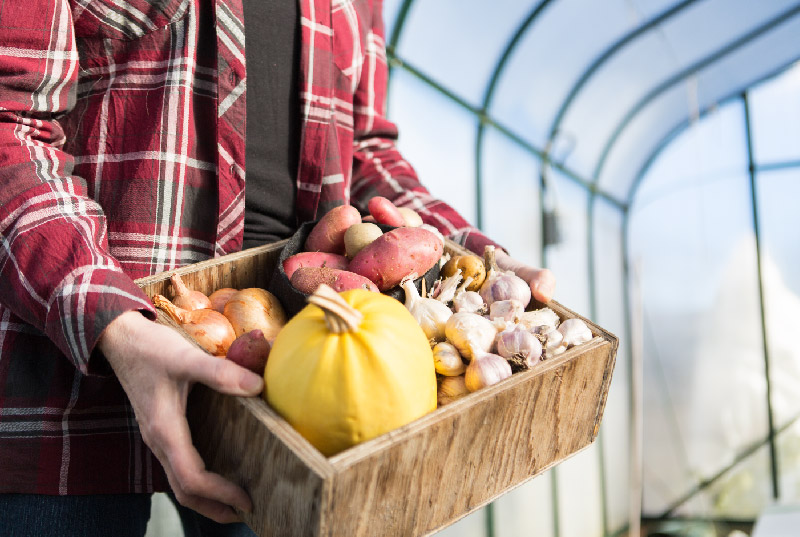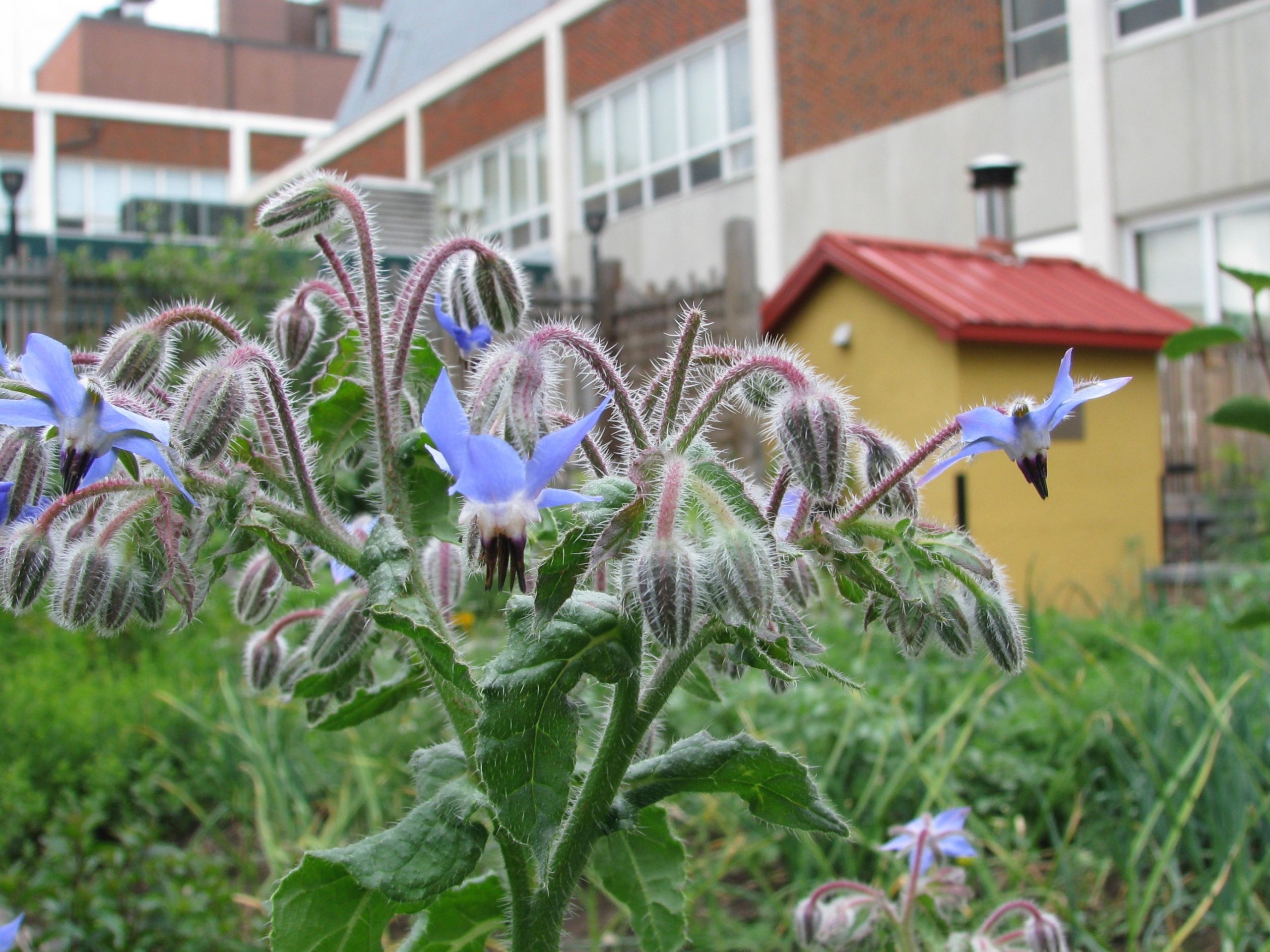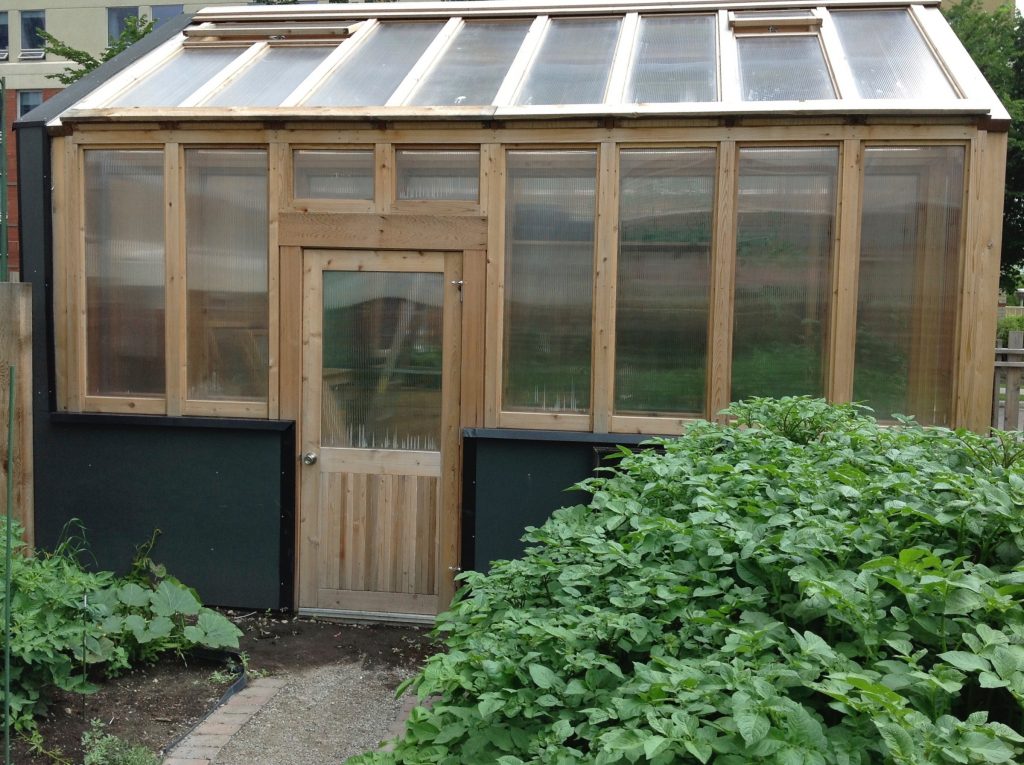
I help gardeners grow
& beginners blossom.
No seed left behind,
no soil unturned.
Together we can have lots of fun growing
great gardens using simple practical tips.
- Featured in -





Start saving & storing your garden seeds for a more more sustainable future
SIGN UP to get the FREE Seed packet PDF
X CLOSE

A Garden Of Good Taste
Give a regular gardener a green tomato and there will be complaints. Give the same thing to a chef and there will be cheers and full jars of green tomato chutney.
I recently visited the Jackson Henuset Memorial Culinary Garden, a new outdoor classroom and demonstration site for green tomato loving chefs and their apprentices at SAIT in Calgary.
In anticipation I bring my gloves and trowel as two events unfold for instructors/chefs Andrew Hewson and Simon Dunn. The first event is a professional development day for teachers from McKenzie Lake School in Calgary, followed by a vegetable-planting bee for SAIT Polytechnic apprentice chefs.
In the past, when SAIT instructors asked chef apprentices to get fresh vegetables from the school’s large walk-in coolers, they sometimes received blank stares. Names and appearances of vegetables were a mystery to many new apprentices. “The main reason we put so much extra time into the garden is to simply connect our students to the food. It’s one thing to teach them the skills of how to cook but a whole other thing to teach them about FOOD…” says chef and instructor Hewson via email.

Planting seeds in the SAIT culinary school garden involves a work bee for apprentices and employees
The teachers are on site to learn about the newly completed better-than-solar greenhouse and Jackson’s Garden. The program includes lunch, and the teachers make their own pizzas in the garden’s Forno oven.
As Hewson and Dunn begin showing off the greenhouse, carefully constructed over a four-year period, I am immediately impressed. On campus, a 4-million dollar project was built faster than this tiny greenhouse, Hewson explains with a laugh as he shows off the high-tech greenhouse features.

The specially designed “Bubble heated” greenhouse at SAIT gives the students extra growing space and experience
Dunn further explains how hot water, heated from solar panels and waste biodiesel, warms the soil. The temperature of each bed is carefully controlled, and new “bubble” technology provides R30 insulation to keep the greenhouse warm in winter and cool in summer. I have a home greenhouse and I know how difficult it is to keep it cool on sunny days, so I am impressed that this greenhouse is cooler and more comfortable by design than the outdoor temperature on this garden-planting day.
The teachers finish their pizzas and leave the site chatting among themselves about worms and growing bins in their classrooms, apprentices arrive from restaurants all over the city for a volunteer planting bee. Hewson, Dunn and summer horticulture intern Allyse Gluting are ready with seeds and a map of planting locations. “It’s terrifying that chefs in training don’t know food,” says Hewson. “I just took it for granted when I was in training but a lot of our students haven’t had any experience. So I pitched the garden idea to the dean and he was all for it.”
After everyone on campus bought into the idea of the garden and greenhouse in 2009, it was paid for by a donation from Willow Park Winery and installed, planted and named Jackson’s Garden in 2010. Plants include annual and perennial vegetables and herbs and fruit-bearing plants such as hardy cherries, haskaps, sea buckthorns, currants and raspberries. In total 185 different varieties are grown on the small piece of land wedged between the culinary arts building on the SAIT campus and a previously existing sidewalk.
We watch an apprentice pick and taste lovage—or “super celery”—as Hewson calls the hardy herb, already a metre tall by mid-May. Hewson smiles and comments about flavour memories. He likes seeing students taste plants in the field and subconsciously register that taste for future cooking endeavors. Bloody dock and sorrel, two perennial vegetables from Jackson’s Garden, are planted in the “white-wine paired” section of the garden. They have citrusy overtones, and the teachers love the lemony taste. Sorrel is green and looks more like spinach while bloody dock has beet-like red veins. Both are perennials, have survived three winters and are great in salads.
Gluting is not an apprentice chef. She is a graduate in the horticulture program at Olds College. She runs the planting bee like a chef runs a busy kitchen. Directing the volunteers is an exercise in organized chaos. “I’m so excited to have you all here . . . write your plant tags first . . . then plant your rows,” she barks in staccato style as the students assemble in groups of three and start planting. Her comment “If you can read you can plant” brings giggles.
“Okay, so we should have dug our hole first,” says one student, after pulling a limping tomato plant out of its pot too soon. Luckily it was just one of several heirloom tomatoes Hewson and Dunn have grown on campus, and the student dug the rest of the holes before pulling each plant out of its pot. The chefs and apprentices hope these tomatoes will ripen but even if they don’t, dreams of past batches of green tomato chutney are discussed.
Apprentices gained a sense of accomplishment during their planting bee and for many it was their first experience in a food garden. Others spoke fondly of home gardens they missed now that they are living in the city.
I provided a few tips (“lay out your peas first and then poke them in”) but didn’t have time to don my gloves. That will have to wait for another day. I look forward to checking in regularly with Gluting and the SAIT garden of good taste this summer.
To arrange a tour for your group or see the garden please contact:
www.saitculinarygarden.blogspot.com
What Would Donna Do?
Get my growing and gardening tips and pointers throughout the season.
















0 Comments